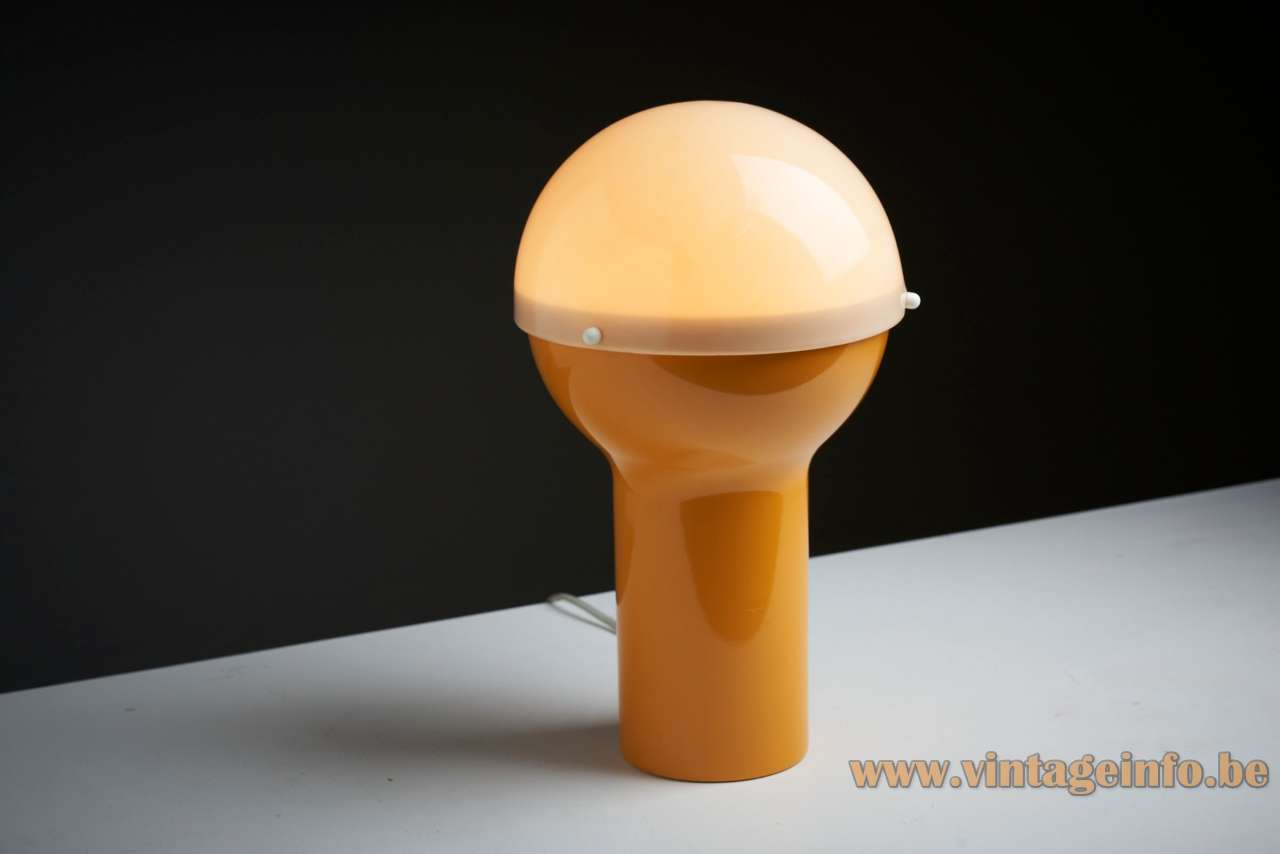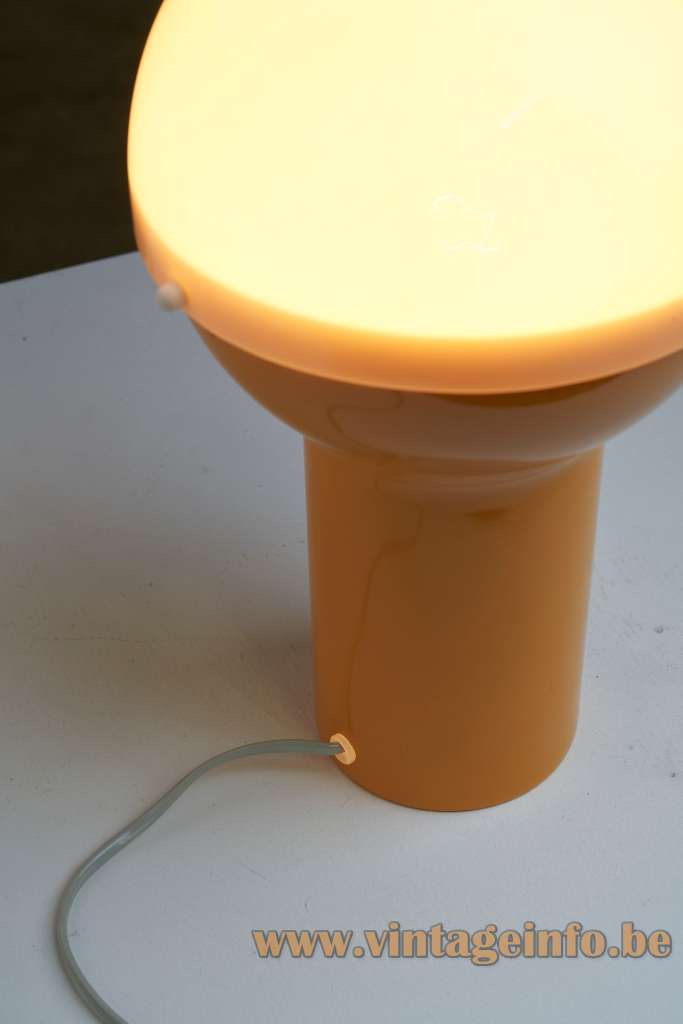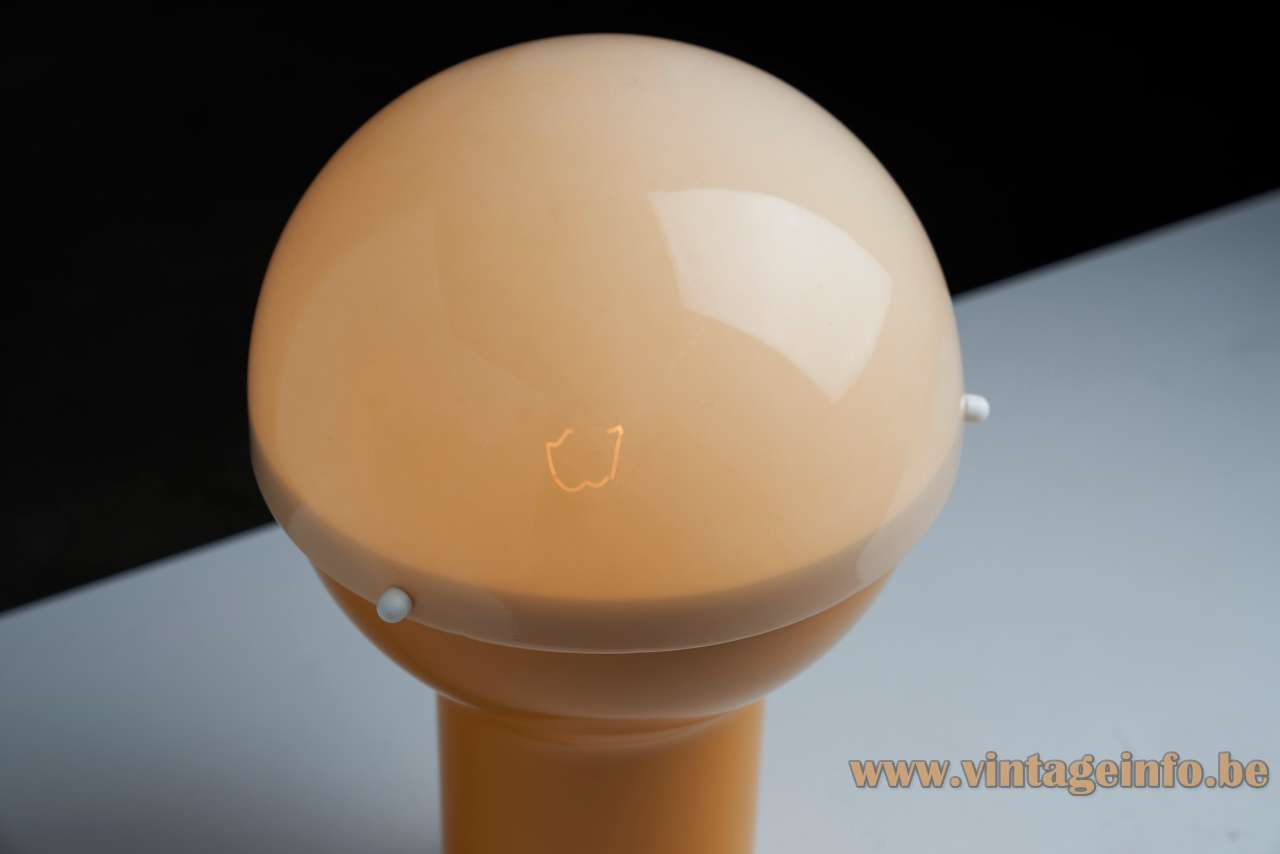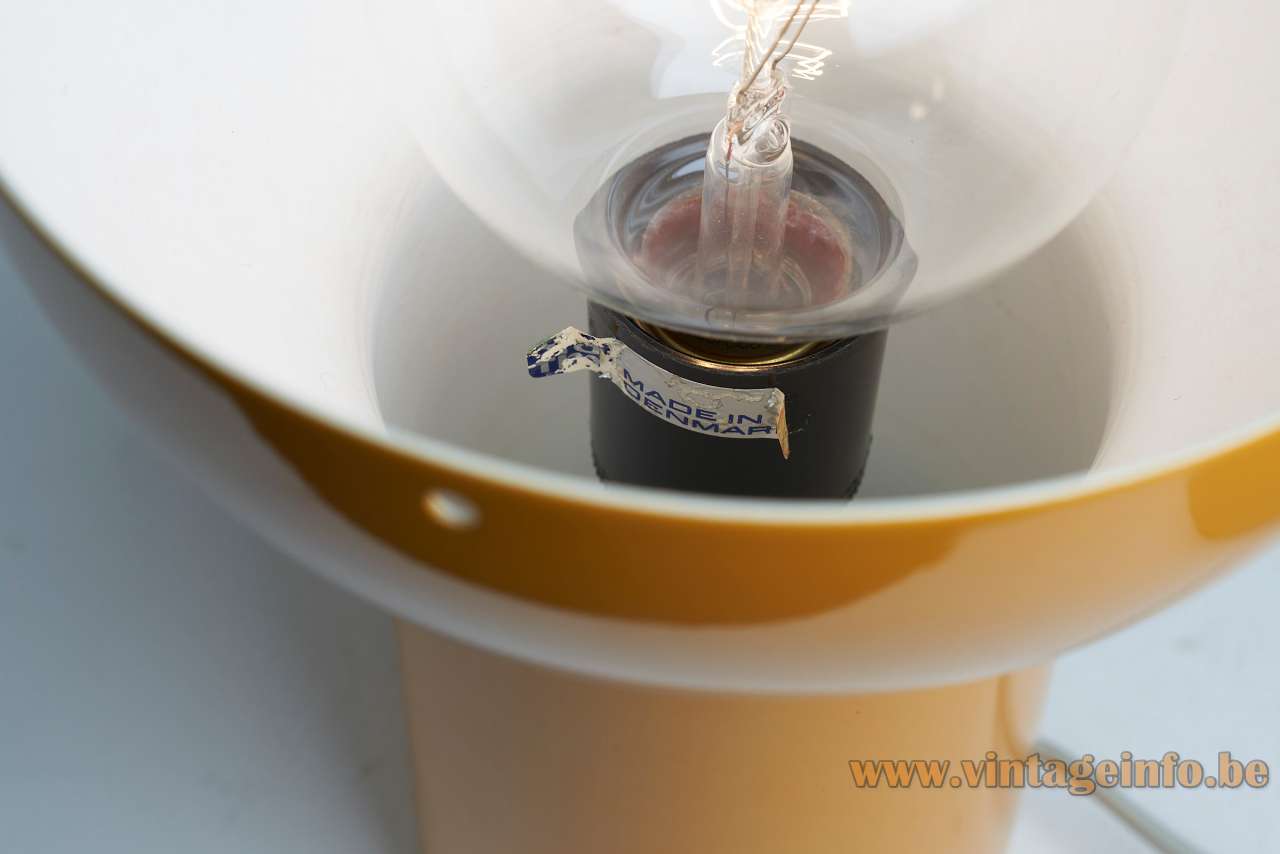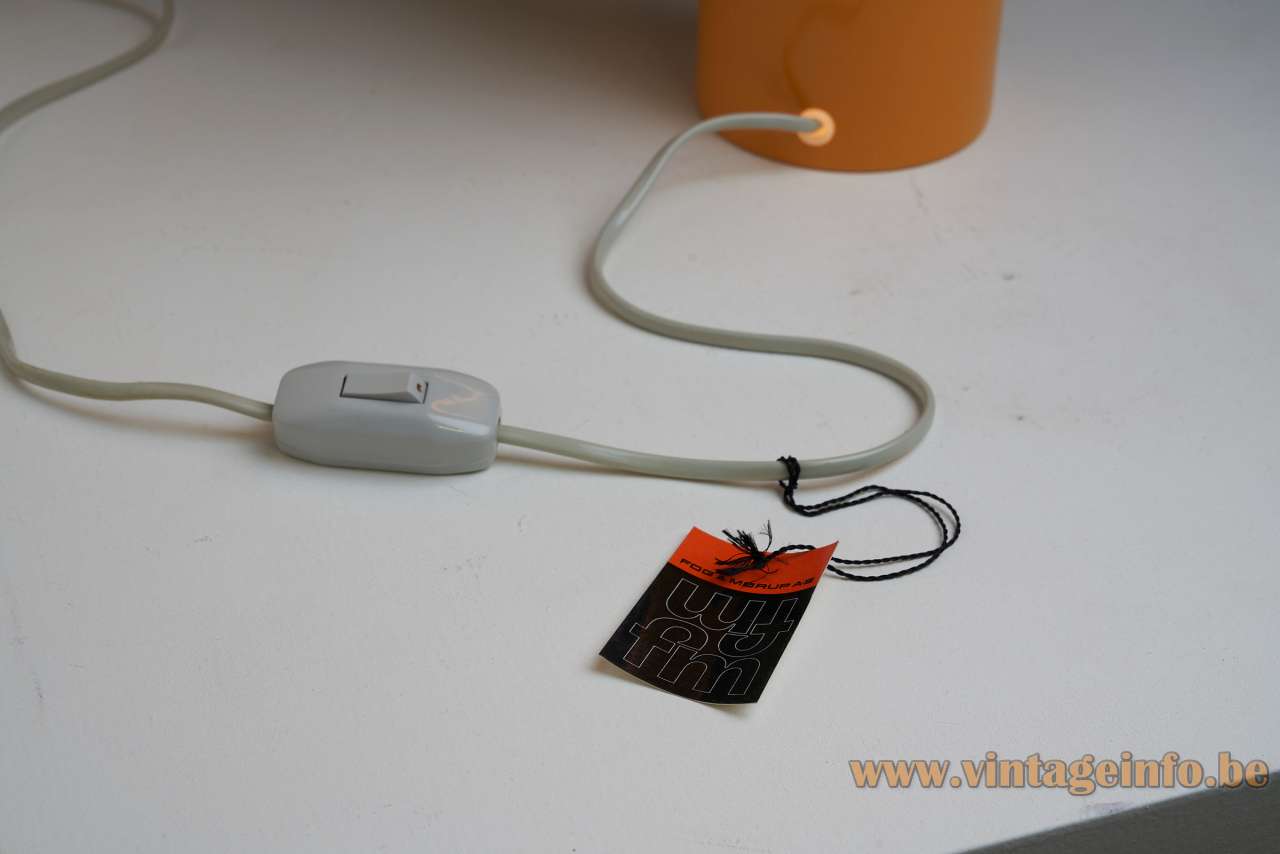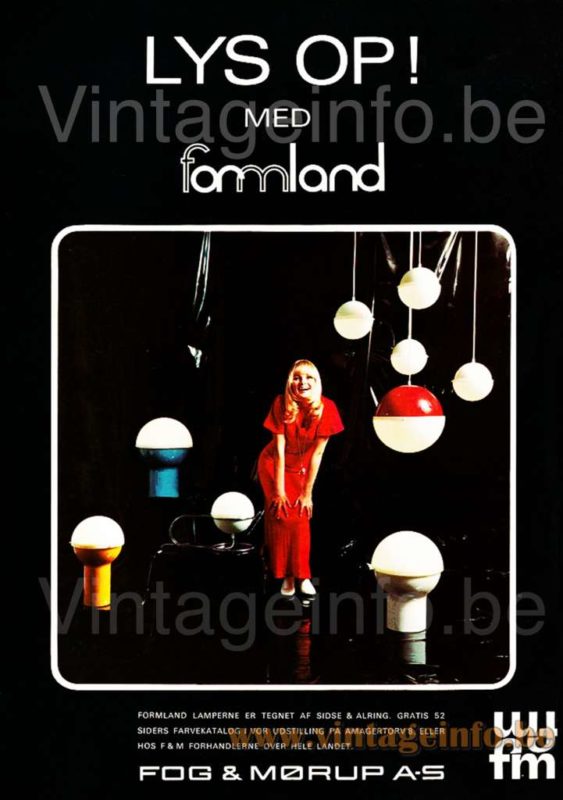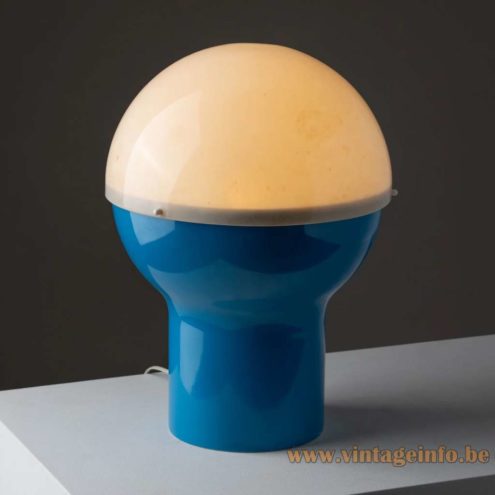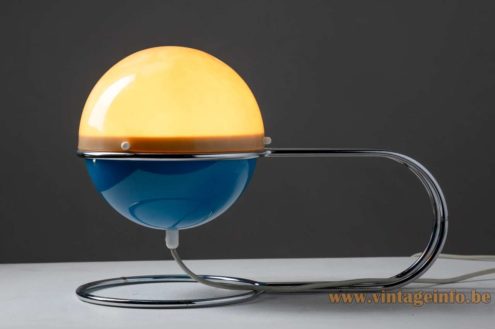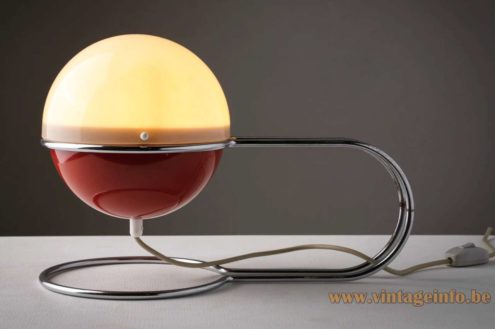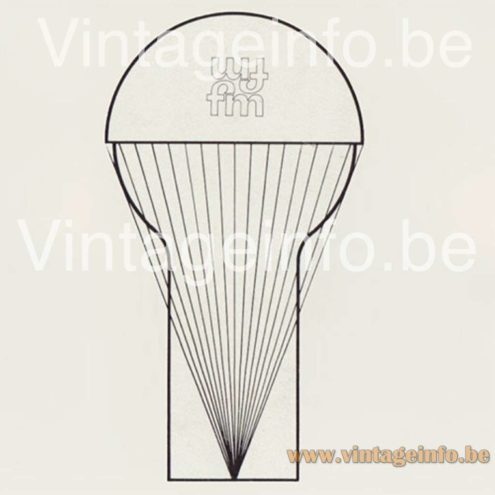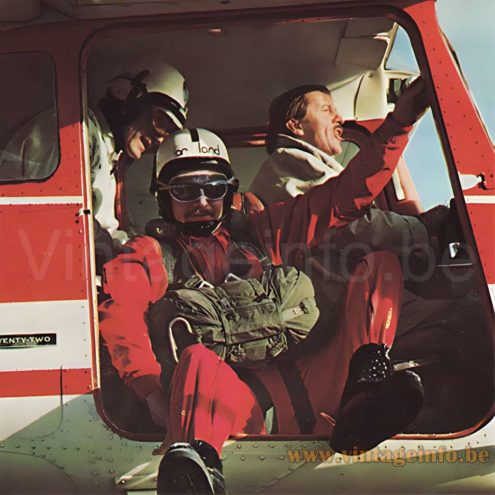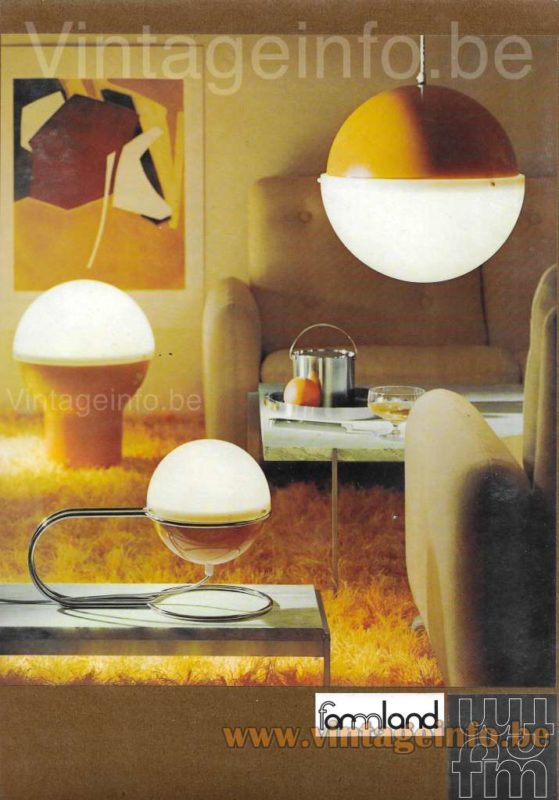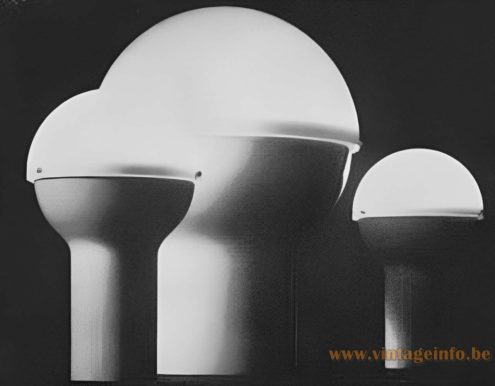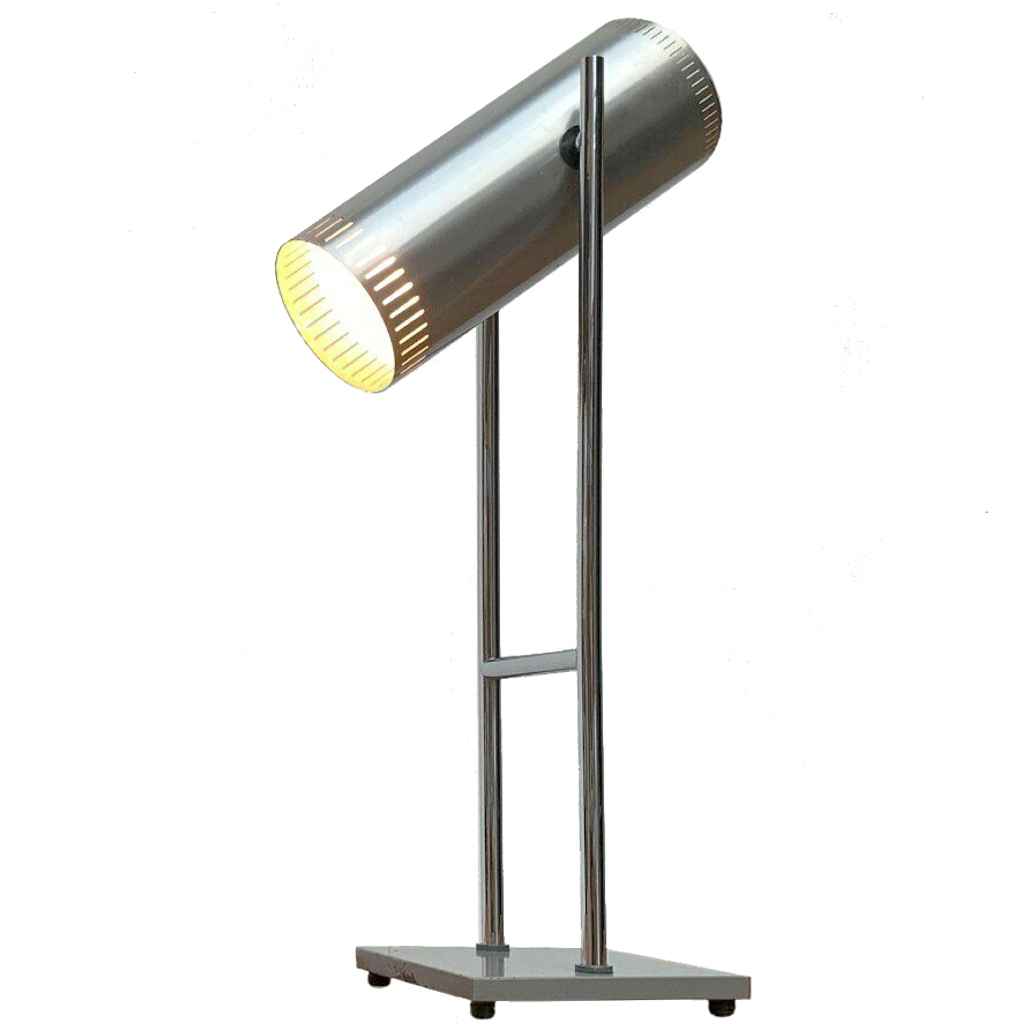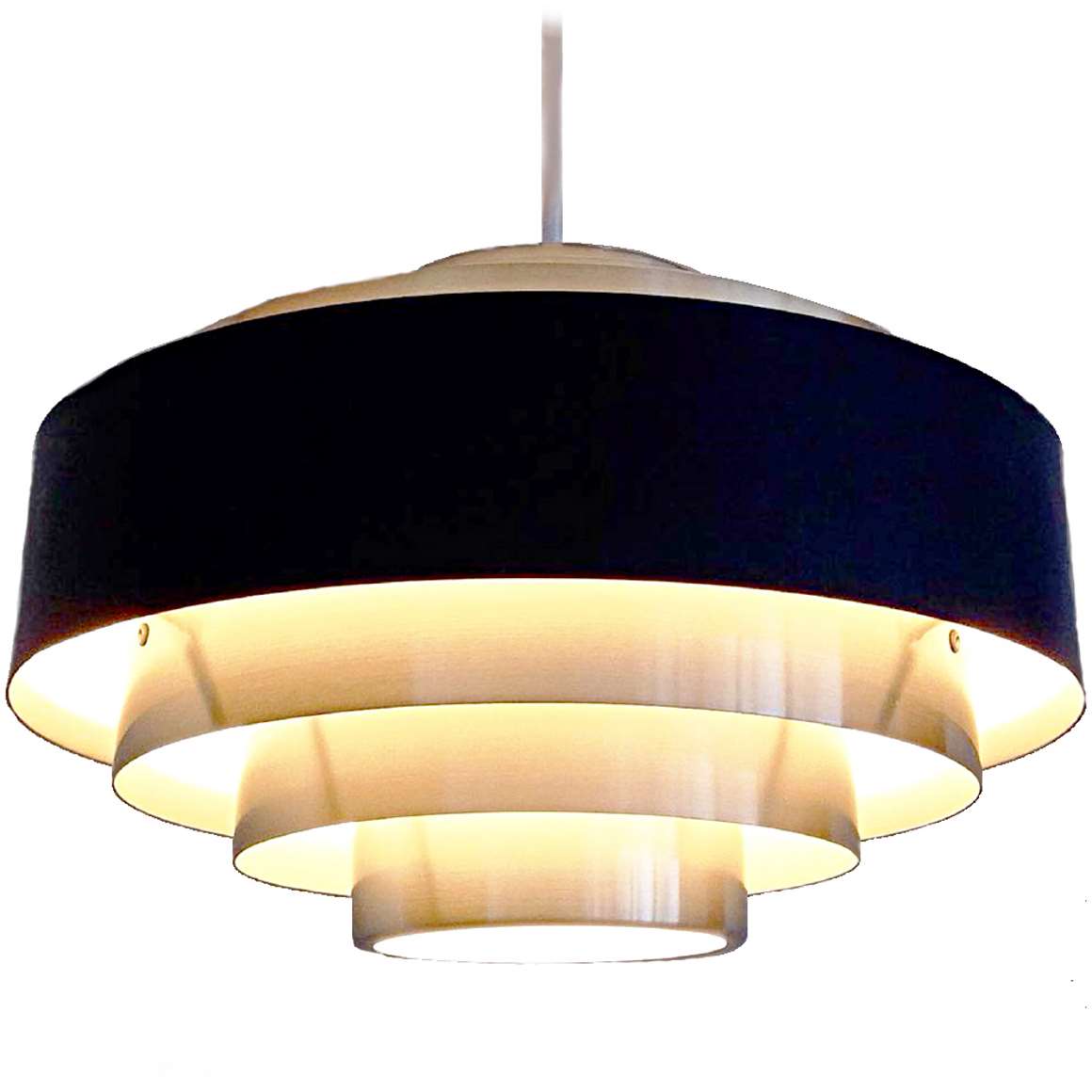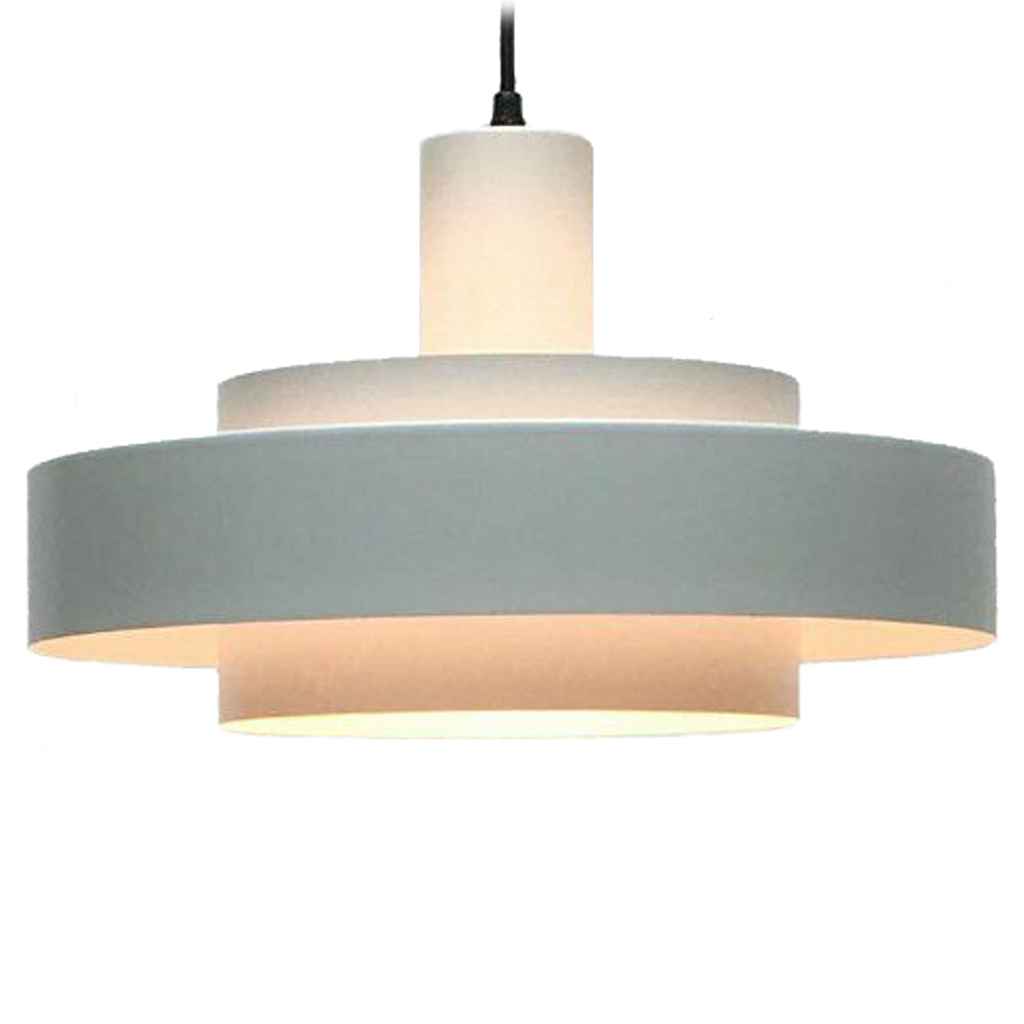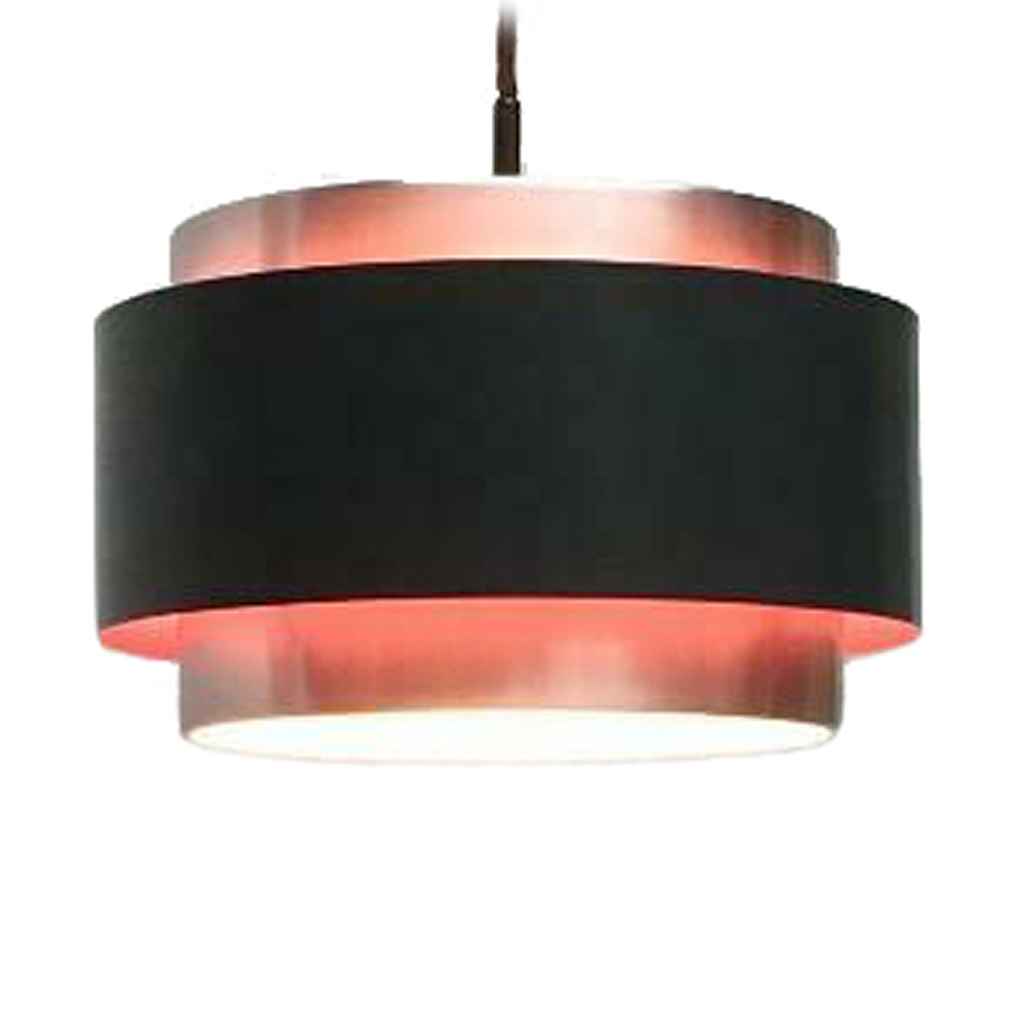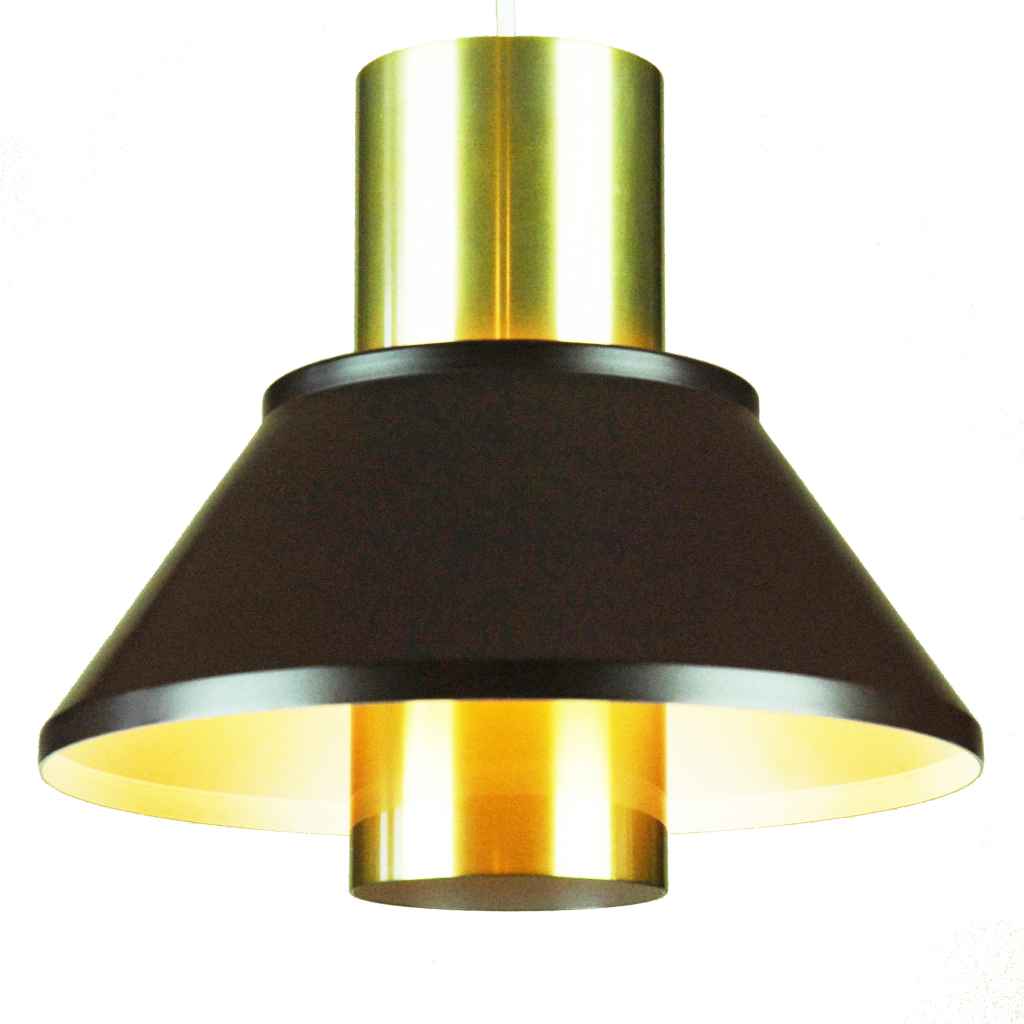Fog & Mørup Formland Table Lamp – 1970s Catalogue Picture
Fog & Morup Formland lamps, all the models together.
Formland 1 & 2: Small and big pendant lamp.
Formland 3: Big table lamp, as the yellow one in the pictures.
Formland 4: Floor lamp.
Formland 5: Table lamp with the chrome tubular frame.
Formland 6: Wall lamp.
Fog & Mørup Formland Table Lamp – 1970 Catalogue Picture
Fog & Mørup Formland 3 advertisement. The parachute, where the idea for this lamp came from. Available in white, red, turquoise and yellow.
Fog & Mørup Formland Table Lamp – 1970 Catalogue Picture
Fog & Mørup Formland 3 advertisement. The parachute, where the idea for this lamp came from. Available in white, red, turquoise and yellow.
Fog & Mørup Formland Table Lamp
Small version of the table lamp, also available in the four colours.
Fog & Mørup Formland Table Lamp
Another model table lamp, also available in the four colours.
Fog & Mørup Formland Table Lamp
The same table lamp as above, but this one is the red version.
Fog & Mørup Formland Table Lamp
Wall lamp in blue, together with the original shipping box.
Links (external links open in a new window)
Lightyears – Republic of Fritz Hansen
Horn Belysnign history -Danish Vintage Design
The story of Fog & Mørup, Danish modern lighting superstar – Classic-modern.co.uk website
More info about this lamp series on classic-modern.co.uk
Swedish article about these lamps (archived) – pdf
Vintageinfo
Many thanks to Max from AfterMidnight for all the pictures of the lamps and a few catalogue pictures.
Many thanks to Aksel for a few catalogue pictures.
Many thanks to Frederik for a few catalogue picture.
Fog & Mørup Formland Table Lamp
Materials: Round orange-yellow painted aluminium base. Half round butyrate plastic lampshade. 3 white ornamental screws. Some metal parts. E27 lamp socket.
Height: 34 cm / 13.38”
Width: ∅ 19 cm / 7.48”
Electricity: 1 bulbs E27, 1 x 60 watt maximum, 110/220 volt.
Any type of light bulb can be used, but a clear one is preferred.
Period: 1970s – Mid-Century Modern.
Designer: Sidse Werner & Leif Alring around 1970.
Manufacturer:Fog & Mørup A/S, Denmark.
Other versions: The Fog & Mørup Formland table lamp comes in several versions, as you can see in the catalogue pictures. This lamp is model Formland 3.
These lamps series received an iF design award in 1971.
Formland
In 1969–70 Danish designers Sidse Werner and Leif Alring unveiled their Formland lamp series at Fog & Mørup’s Amagertorv showroom. Avid parachutists, they translated parachute forms into the lamps’ silhouettes. For the launch they even had a one-off made in silver, gilded inside, weighing about 2.5 kg and valued at about 10,000 kroner (≈ €1,339 at today’s DKK→EUR rate).
The same profile also appeared at the festivities as red glass tumblers with a matte white plastic “cap,” and the series was shown at the May furniture fair in Copenhagen; at the time their studio was at Kattesundet 12.
Construction & light quality
Formland combined a lacquered metal body (in white, red, turquoise, yellow) with a domed diffuser in butyrate (cellulose acetate butyrate). The material choice was explicitly highlighted in period coverage as enabling a light-transmitting, non-dazzling top—allowing you to see the filament without glare.
Art-direction & marketing
The parachuting motif used for the launch tied directly to the designers’ (and Fog & Mørup design chief Jo Hammerborg’s) airborne interests; later commentary based on family correspondence notes Hammerborg’s close involvement with the project and his role as pilot in the campaign imagery.
Materials note (butyrate)
Period sources describe butyrate’s optical clarity, toughness and UV resistance as reasons for its use in lighting diffusers of the era—matching the Formland brief for soft, glare-free illumination.
Fog & Mørup Formland Table Lamp – 1970 Catalogue Picture
Promotion for this lamp series at the parachute jumpers flying club of the designers.
Sidse Werner (1931–1989)
Danish architect–industrial designer trained in Copenhagen (School of Architecture & Industrial Design); worked several years in Nanna Ditzel’s studio before opening her own office in 1970. In 1969 she received the Danish National Bank’s Jubilee grant to study plastics in the USA, which fed into her later work across furniture, textiles, glass and lighting. Notable pieces include the Coat Tree and Series 9 umbrella stand for Fritz Hansen, glass and lighting for Holmegaard (e.g., “Troll 1 ” table lamp, late 1970s–80s), and—with Leif Alring —the Formland lighting series for Fog & Mørup (c. 1969–70). Her work was exhibited internationally (London, Paris, New York, San Francisco, Tokyo, etc.)
Leif Alring
Danish designer/architect active from the mid-1960s into the 1970s. Worked across furniture, interiors and objects: Modula System unit furniture for PH Møbler (advertised 1966); a folding bar cabinet for C.F. Christensen (1964); co-designed the Formland lamps with Sidse Werner for Fog & Mørup (c. 1969–70). He also appears in Danish press for interior/discotheque commissions and designed the steel trophy sculpture for the Anders Bording Prize.
Butyrate
Butyrate plastics, most commonly Cellulose Acetate Butyrate (CAB), are a type of thermoplastic derived from natural cellulose that is known for its clarity, impact resistance, and weather resistance. They are used in a wide range of applications, including lighting, signage, packaging, and medical devices due to their toughness, high gloss, and ability to be thermoformed. Butyrate plastics are transparent with a high gloss, making them ideal for applications that require optical clarity, such as back-lit signs. It provides UV stabilization, which is important for outdoor applications to prevent degradation from sunlight.
Fog & Mørup Formland Table Lamp – Promo Picture
The two designers with Jo Hammerborg behind the controls of the plane to promote their Formland lamp series.
Jo Hammerborg
Johannes (Jo) Hammerborg was born on 4 February 1920 in Denmark. He grew up on the outskirts of Randers in a middle-class family, trained as a silversmith and, during 1940–45, served in the Danish resistance as a saboteur. After the war he studied at the Royal Danish Academy of Fine Arts and worked as a silversmith at Georg Jensen.
In 1957 Hammerborg became head of design at Fog & Mørup, a role he held until 1980. A pronounced idea-driven designer with a clear philosophy of form, function and restraint, he was a key force behind the company’s most creative and commercially successful years. He personally designed around 180 lamps for Fog & Mørup and also collaborated in refining others’ models; several of his designs received international awards. After a series of mergers beginning in 1980, Fog & Mørup eventually ceased production of his designs in the late 1990s.
Outside his professional life, Hammerborg was an avid and versatile athlete, a pilot and a pioneer in parachuting. He died in 1982, aged 62, in a parachuting accident.
Fog & Mørup Formland Table Lamp – 1970 Catalogue Picture
Promotion for this lamp series, probably also at the parachute jumpers flying club of the designers.
Fog & Mørup
Ansgar Fog (1880–1930) and Erik Mørup (1879–1972) founded their business in 1904 as a metalwork wholesaler. Two years later they moved to Copenhagen, shifted their focus to lighting production, and over time acquired several electrical and lighting companies. Fog & Mørup emerged as a key force in lighting design in the early 1960s, following the appointment of Jo Hammerborg as head of design in 1957.
Notable designers and architects who worked with the company include: Claus Bonderup, Torsten Thorup, Sidse Werner, Sophus Frandsen, Jørgen Bo, E. Balslev, Peter Avondoglio, Karen Clemmensen, Ebbe Clemmensen, Hans Due, and of course Jo Hammerborg.
Lyfa
In the late 1970s, Fog & Mørup merged with Lyfa, another leading Danish lighting producer. In 1980 Jo Hammerborg retired. A few years later, Lyfa–Fog & Mørup was taken over by Lyskær, and the name changed to Lyskaer–Lyfa.
Lyskaer–Lyfa produced lights until 1991, when it was incorporated into Horn Belysning A/S of Aalstrup, Denmark, which was itself taken over in 2005 by Nordlux of Ålborg and, to a large extent, dismantled.
Horn Belysning
Horn Belysning A/S was founded in 1952 as a family business, initially named E.S. Horn. In 1963 it became Horn Belysning (Horn Lighting).
The company produced lighting for IKEA and several other European retail chains. It designed products and also imported lighting from China. In the 1980s Horn was the second-largest lighting company in Denmark.
In 2005 the name changed to Lightyears, which today is owned by Republic of Fritz Hansen.
Fog & Mørup Formland Table Lamp – 1970 Catalogue Picture
Catalogue image of a table lamp, a big floor lamp and a pendant lamp, all in yellow.
Fog & Mørup Formland Table Lamp – 1970 Catalogue Picture
Black & white advertisement.


